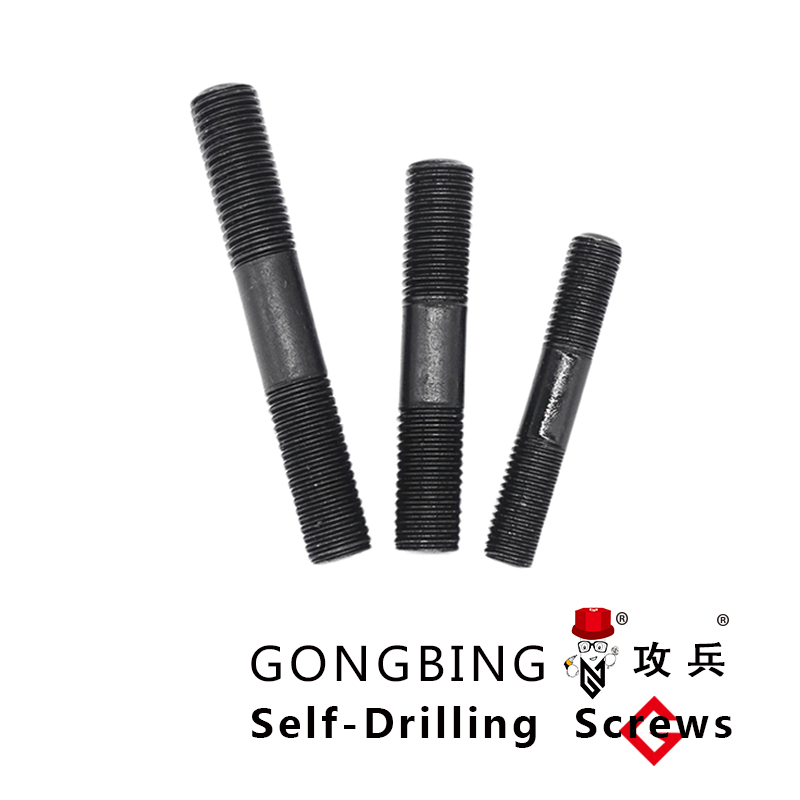double threaded stud bolts
Understanding Double Threaded Stud Bolts Features, Benefits, and Applications
Double threaded stud bolts are essential components in various mechanical and structural applications, serving as vital links in assemblies and securing components in place. With their unique design and functionality, double threaded stud bolts find usage across multiple industries, ranging from automotive to construction and manufacturing. This article explores the features, benefits, and applications of double threaded stud bolts to provide a comprehensive understanding of their importance.
Features of Double Threaded Stud Bolts
A double threaded stud bolt is characterized by having threads on both ends, allowing for enhanced versatility in installation. Unlike standard bolts with a single threaded end, double threaded studs can be easily fixed into slightly varied components, providing the ability to secure components that might be misaligned. Typically, the middle portion of the stud remains unthreaded, serving as a grip that can be used for stabilization or as a pivot point.
Materials commonly used for manufacturing double threaded stud bolts include carbon steel, stainless steel, and alloys, allowing for different levels of resistance to corrosion and strength. These materials are chosen based on the specific requirements of the application, such as exposure to harsh environments or the need for high tensile strength.
Benefits of Using Double Threaded Stud Bolts
The use of double threaded stud bolts comes with several advantages. Firstly, their design allows for flexibility in assembling components, as they can accommodate parts that do not perfectly align. This feature simplifies assembly processes which can be particularly beneficial in constrained spaces where tools cannot reach.
double threaded stud bolts

Secondly, double threaded studs provide improved load distribution. The threaded ends lock into place, reducing the risk of loosening over time, a common issue in applications subjected to vibration and dynamic loads. As a result, they enhance the durability and longevity of the joint, minimizing the need for frequent maintenance or replacements.
Additionally, double threaded stud bolts can be used in place of regular bolting systems, potentially reducing hardware inventory and simplifying maintenance procedures. Their universal application means fewer components are needed to achieve the same job, which can lead to cost savings in manufacturing and assembly processes.
Applications of Double Threaded Stud Bolts
Double threaded stud bolts are widely used across various fields. In the automotive industry, they are frequently employed to secure engine components, suspension systems, and body panels due to their ability to withstand significant loads and stresses. In construction, these bolts are used to anchor structural components such as beams and columns, ensuring stability and safety in buildings and infrastructure.
Additionally, double threaded stud bolts are common in the manufacturing sector, particularly in machinery assembly. Their versatile design allows for quick installation and removal, which is essential in high-efficiency production environments. Industries such as oil and gas, aerospace, and heavy machinery also utilize double threaded studs, where reliability under extreme conditions is crucial.
Conclusion
In summary, double threaded stud bolts offer a versatile and effective solution for securing components in various applications. Their unique design, coupled with their benefits of flexibility, load distribution, and durability, makes them an invaluable component in many industries. As technology continues to advance, the development and refinement of double threaded stud bolts will likely play a crucial role in enhancing the efficiency and safety of mechanical assemblies. Whether you are working in construction, automotive, or manufacturing, understanding the significance of these components can lead to better decision-making in the selection of fasteners for your projects.
-
Weatherproof Plastic Expansion Anchors for Outdoorព័ត៌មានJun.06,2025
-
Sustainability in the Supply Chain: Eco-Friendly TEK Screws Productionព័ត៌មានJun.06,2025
-
Load-Bearing Capacity of External Insulation Fixingsព័ត៌មានJun.06,2025
-
Double Head Bolts: Enhancing Efficiency in Industrial Machineryព័ត៌មានJun.06,2025
-
Corrosion Resistance in Chipboard Screws: Coatings for Wholesale Durabilityព័ត៌មានJun.06,2025
-
Butterfly Toggle Bolts : Enhancing Structural Resilienceព័ត៌មានJun.06,2025
